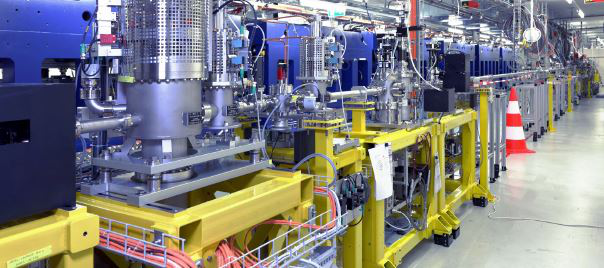Speaker
Description
A major upgrade of the LCLS facility, the LCLS-II project, is now underway. LCLS-II is being developed as a high-repetition rate X-ray laser with two simultaneously operating, independently tunable FELs. It features a 4 GeV continuous wave superconducting linac that is capable of producing uniformly spaced (or programmable) ultrafast X-ray laser pulses at a repetition rate up to 1 MHz spanning the energy range from 0.25 to 5 keV. Furthermore, the XLEAP sub-femtosecond soft X-ray pulse generation program is scalable to LCLS-II repetition rate [1].
We have designed, based on the Viefhaus et al. Cookiebook [2], an angle-resolving array of 16 electron time-of-flight spectrometers that allow wide and adjustable energy acceptance windows. By interleaving detector retardations, we enable simultaneous angle-resolved photo-electron and Auger electron spectroscopy as is required by cutting edge molecular frame spectroscopies and diffraction. The spectrometer array will be available for spectral-polarimetry measurements as well as polarization sensitive attosecond resolving temporal characterization of LCLS-II pulses. This multi-polarization and multi-color spectral diagnostic/experiment endstation will have an energy resolution better than the expected seeding spectrum and the SASE spectral features.
We would like to present the next generation of high resolution electron spectroscopy endstation and FEL generated X-ray pulse diagnostic – MRCOFFEE. This talk will present the important science opportunities, new diagnostic capabilities of this newly designed TMO instrument/diagnostic.
[1] Duris, J, et. al. (2019). Tunable Isolated Attosecond X-ray Pulses with Gigawatt Peak Power from a Free-Electron Laser. Nature Photonics, 14(January). https://doi.org/10.1038/s41566-019-0549-5
[2] Hartmann, N., et al. (2018). Attosecond time-energy structure of X-ray free-electron laser pulses. Nature Photonics, 12(4), 215–220. https://doi.org/10.1038/s41566-018-0107-6
